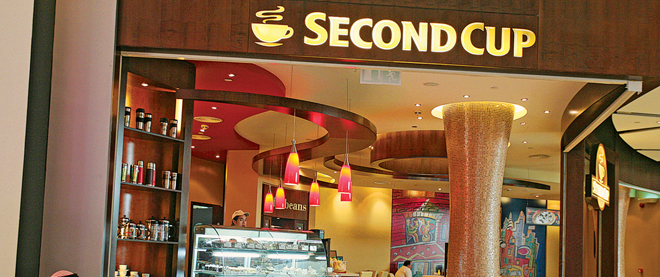A second chance
While Second Cup is an also-ran at home in Canada, business overseas couldn’t be better
Randi Sokoloff / The Nation
Share

Home is not always where the heart is. Take it from Second Cup. Up until the ’90s, the chain, which opened its first location in 1975, had a lock on the Canadian specialty coffee market. At its peak, in 2000, it had 390 locations. But it was soon overshadowed by the likes of Starbucks and Tim Hortons, especially as the latter expanded its offerings to include lattes and espresso. While Second Cup has been unable to regain its Canadian superstardom (it has shut 30 locations here in the past decade), it has found new life elsewhere.
Since 2008, when the international and domestic divisions of the business split into separate companies, the brand has been thriving overseas. It now has 78 locations outside Canada, mostly in the Middle East. In the next six months Second Cup plans to open three new businesses in the region. International success is not a mere cultural novelty, either. Second Cup is opening two stores in Florida this year and plans to open 320 U.K. locations over the next decade.
So what explains the flop in its home market? “We’ve been too polite instead of being confident and aggressive,” says Jim Ragas, president of Second Cup International, which still works closely with the Canadian firm and uses the same coffee and product recipes. Unlike its domestic counterpart, the international Second Cup is privately held, enabling it to take more risks with product offerings and store designs. A Cyprus location has a large patio with couches, a playpen for children and bright graffiti—a marked difference from the signature brown palette in Canadian stores. In January, Second Cup introduced frozen yogourt products in 20 international locations, boosting sales by 15 per cent. Those menu items have yet to be sold in Canada.
Ragas, who has grown the international business from 11 to 20 countries since being hired almost three years ago, says he hopes international solutions will trickle into the Canadian market.“You get in a rut sometimes and it’s hard to get out,” he says. “We have to keep trying different things.” Or different places.